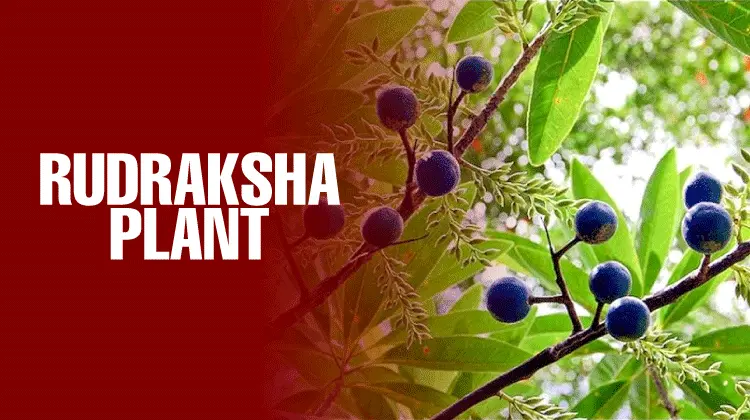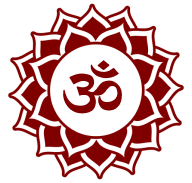Rudraksha Tree or Elaeocarpus Ganitrus Roxb is a perennial or evergreen tree. The seeds of these trees are rudraksha beads.
Rudraksha is famously known for its magical powers. People wear it or make rosaries out of it to enjoy the advantages of this divine bead.
And since rudraksha is a holy bead, it makes its tree sacred. People worship Elaeocarpus trees for their spiritual importance as well as extraordinary properties.
Origin of Rudraksha Trees
Hindu scriptures and ancient texts explain rudraksha’s origin at great length. But, the most common fact is that they are a result of Lord Shiva’s tears.
When Lord Shiva saw the future of humankind through his divine eyes, he lost control. Terrorized by Tripurasura, humanity was heading towards the end.
Lord Shiva could not fathom the idea of humankind’s extinction. The concept of the future in Tripurasura’s control was beyond miserable.
So, he wept for humanity, and wherever his tears fell on the planet, rudraksha trees grew.
People believe that the first rudraksha trees grew in the foothills of the Himalaya. But, there’s no concrete evidence supporting this claim.
Locations where Rudraksha Trees Grow
Nations like Australia, Hawaii, New Zealand, Maldives, Burma, Sri Lanka have rudraksha plantations.
But, the finest quality rudraksha grows in South East-Asian countries.
Leading producers of Rudraksha are Indonesia, Nepal, and India. These nations have more than 90% of the world’s total rudraksha plantations.
- Indonesia – Indonesian rudraksha accounts for 75% of rudrakshas exported. The beads of Indonesian rudraksha trees are small in size. They have less clear etchings or lines. Rudraksha tree plantations are widespread in Indonesia. Being the leading exporter of rudraksha beads, it keeps up with demand.
- India – India being the house to many religions and faiths, has a high demand for rudraksha. In the beginning, Indian rudraksha trees grew only in the Himalayan region. But now, it’s grown throughout the country. Indian rudraksha is less shiny and is often called “Indian rough beads.”
- Nepal – Nepali Rudraksha is the rarest, making it expensive. These trees grow in the perfect environment. Due to this, the beads of Nepali rudraksha trees have different density compositions. The trees flourish and grow to their full potential. Nepali Rudraksha is much more significant compared to Indonesian and Indian rudraksha.
Features of Rudraksha Tree
Few notable features of the rudraksha tree are –
- Rudraksha trees have over 300 species. Out of which, 35 grow only in India.
- Elaeocarpus ganitrus roxb is an evergreen tree. It grows faster than average trees and produces fruits four years from germination.
- A fully grown rudraksha tree can be as high as 30-50 feet.
- These trees grow in several places worldwide. But, higher terrain with ample moisture is vital for cultivating quality rudraksha trees.
- Rudraksha trees that grow 3000 meters or more above sea level produce the best quality beads.
- Rudraksha trees need fertile soil and runoff water for proper development.
Uses of Rudraksha Trees
Rudraksha trees are holy and hence, worshipped. But, that is not their only significance. Different parts of the rudraksha tree have been used in various fields. Almost every component is beneficial in some way or the other.
- Trunk and Bark: Rudraksha tree has several medicinal properties in its bark. Since ancient times, Ayurveda has used rudraksha’s bark in many medicines and cures. Rudraksha tree also has a sturdy trunk. It can make durable and bulk-carrying items.
- Rudraksha Fruits: Rudraksha fruit comprises many gaseous elements. Some of them are carbon, nitrogen, oxygen, and hydrogen. It also has several active components. Alkaloids, tannins, carbohydrates, proteins, flavonoids, gallic acid, etc., are a few examples. Rudraksha fruits have many uses in Ayurveda. It cures many diseases such as diabetes, blood pressure, etc. These fruits are also used in modern medicine to make medications like antidepressants.
- Rudraksha Beads: Rudraksha beads are mainly known for their magical healing properties. They have a spiritual and scientific value attached to them.
Wearing these beads not only solves the problems in your life but heals your body from the inside out.
Rudraksha beads are primarily made into rosaries or wearable jewelry. They are popular among many faiths as well as countries.
Short Summary on Rudraksha Tree
Rudraksha trees represent divinity on earth. Wearing rudraksha beads connects man with his creator.
Lord Shiva made rudraksha as an aid for humankind. It helps the world in every way possible.
One can use every part of the rudraksha tree in one way or another. From its bark to its seed, you shouldn’t throw away any part of the tree.
Elaeocarpus Ganitrus Roxb contributes to the spiritual as well as the scientific world.
It can cure even the worst of disorders and help one out with every problem. Planting a rudraksha tree near your house brings goodwill and health to your family.














2 Responses
Fabulous!
Rudraksha lovers rudraksha tree super.